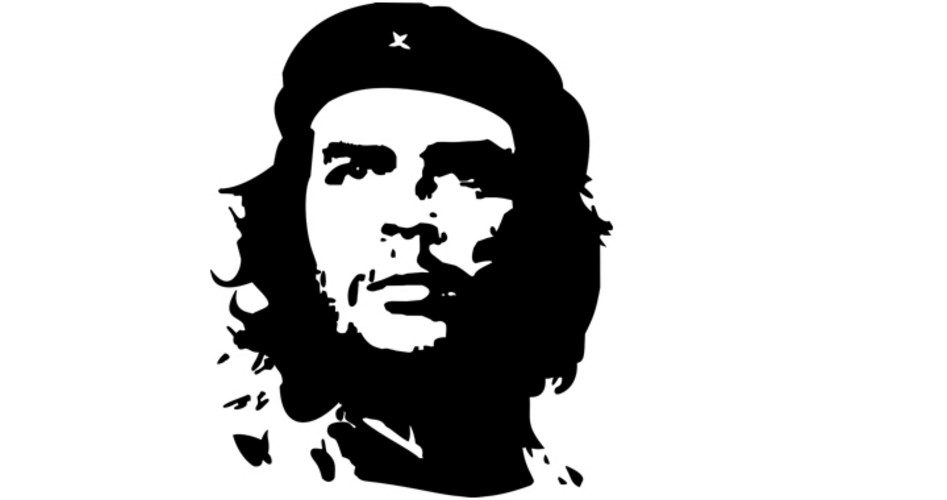
You know how it’s supposed to work.
First, you spend the greater part of your life killing, hating, training murderers, supporting a policy of a largescale nuclear attack on the United States, and organizing and relishing the mass slaughter of thousands of the guiltless through arbitrary arrests, imprisonment, torture, denial of due process, and violent deaths by politicized firing squads.
Second, you’re not supposed to get, after that, a romanticized image of your face on racks of t-shirts at Sears, Urban Outfitters, Gap, Belstaff, and JCPenney, or get an alluring mugshot of yourself on a special purse by Louis Vuitton.
The iconic photo portrait of Ernesto “Che” Guevara most widely utilized on everything from mouse pads to cigar boxes, from mugs, backpacks and scarves to wallets, baseball caps, and tattoos, was taken in Cuba by fashion photographer Alberto Korda at the funeral for dock workers killed by an explosion in Havana harbor on the French freighter La Coubre while it was being unloaded of a shipment of Belgian munitions purchased by the Cuban government, injuring or killing nearly 300, a deadly occurrence that Fidel Castro blamed on American sabotage.
“My grandmother used to light a candle to worship him,” wrote Cuban photographer Orlando Luis Pardo Lazo in the Smithsonian Journeys quarterly in 2016, speaking of Guevara. “That famous face, printed on a huge poster my grandmother had scavenged from the streets of Havana following a military parade. It was heroic, seemingly immortal. Grandma used to pray to him as Saint Che.”
Korda’s photo of Che, continued Lazo, provided “pop culture immortality” to Guevara and “became one of the most reproduced images ever, rivaling those of the Mona Lisa and Marilyn Monroe with her white skirt flying” in a publicity photo for The Seven Year Itch.
“From Bolivia to the Congo, from Vietnam to South Africa, from the U.S.S.R. to the U.S.A., Che became the apostle of anti-capitalism and the ultimate icon for peaceful social activists everywhere,” explains Lazo, “despite the fact that Che himself had preached hatred as a tool for the ‘New Man’ to wipe exploitation from the Earth.”
He also preached love: “The true revolutionary is guided by a great feeling of love. It is impossible to think of a genuine revolutionary lacking this quality.”
And hate: “A revolutionary must become a cold killing machine motivated by pure hate. We must create the pedagogy of the execution wall.”
Castro placed Guevara in charge of La Cabana prison, Cuba’s main political prison, where he was the boss, judge, jury and executioner.
Collegiate Times columnist Allison Aldrich reported on an incident involving Guevara at the La Cabana prison in her March 11, 2008 column: “Several men who survived La Cabana prison recall a night when a 14-year-old boy was shoved into their holding cell. When asked what he did, he gasped that he had tried to defend his father from the firing squad, but was unsuccessful. Moments later, guards dragged the boy out of the cell, and Che Guevara himself ordered the boy to kneel down. The jailed men screamed ‘assassins!’ and watched out of their cell window as Guevara took out his pistol, put the barrel to the back of the boy’s neck, and fired.”
Ralph R. Reiland is Associate Professor Emeritus of Economics at Robert Morris University in Pittsburgh.


